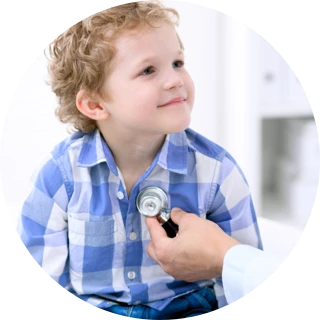Information
Vision is one of the biggest wealth of human beings. Via the eyes we receive 9/10 of the information of the surrounding world. Therefore it is necessary to provide ideal conditions for harmonic development of eyes in the organism growth period to create excellent visual functions. Reduction of vision in childhood is noticed most often in children with refraction abnormalities /myopia, hypermetropia, astigmatism/. Usually the children with reduced vision, which is not corrected, are nervous, forgetful, their marks in school are lower. In case of myopia, they read and watch TV at close distance. They see clearly at close distance but do not see well far, improving their vision to a certain extend by squinting. The following complaints are specific for children with hypermetropia: headache, pain in temple, vertigo. Erythema and formation of flakes on eyelash ends in such children are not rare. Often repeating hordeolum could be due to uncorrected hypermetropia. There could be also “hidden” hypermetropia. In children with normal vision but with some of the above complaints, at pupil dilatation it could be revealed big diopter of hypermetropia even up to 4-5 years. Existence of astigmatism yields almost the same complaints. If the children have some of the above complaints, this is a sufficient reason to be brought immediately to ophthalmologist. Still rare are the cases when the parents with glasses, lead their children to check their vision and this should become a practice.
What are the reasons for this recommendation? At the study carried out /at pediatric ophthalmologic consulting room/ on heredity, met in refraction abnormalities with/without strabismus were examined 90 families of hospitalized children. High percentage of heredity is found. In 56% there is abnormality in refraction of other family member. It makes an impression the big heredity in myopia – 66.6% and astigmatism – 75% and abnormalities are almost of one and the same type. This obliges us, the physicians, to insist the parents with high refraction abnormalities to bring their children for prophylactic eye examinations. Early discovery of vision abnormalities in children is very important for correct orientation with regards to the future profession.



 On this page, you can change your choices at any time after you have read and understood our
On this page, you can change your choices at any time after you have read and understood our